High above the Kofu and within view of the all mighty Mt. Fuji, my friend Mieko joins me to tell the story of her family and this magical place they created. What starts as a conversation about a natural spring, quickly becomes the story of a family that believes very strongly in giving to those who are in need. As day turns to night and the sun goes behind the mountain, Mieko also reflects on her happy years living in the Netherlands and how she see’s her home country of Japan changing. (special thanks to Mieko and her family for one of the greatest weekends of my life)
Tag Archives: health
Life, Death, and the Unglamorous Era of Ad-Men
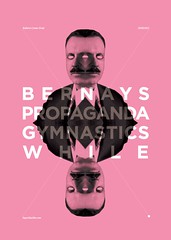
John Hall remembers the advertizing business in the 50’s, 60’s and 70’s, and there was nothing glamorous about it. His personal policy in the work place was not to pursue wealth and happiness, but to pursue work that brought meaning to life, which in turn has always given him a feeling of being content and the richest man around. As a business man, a hospice nurse, an english teacher for French people, and a business teacher – one thing shines through no matter what he is working on – John Hall is a force to be rekoned with in the best possible way.
John joins me on the phone from Paris in this very insightful and fun conversation about the lessons he’s learned from fantastic life experiences, and his struggle to convey that to future global business leaders.
Something more than selling fruit
The navigation system is scolding me with its female voice in Portuguese, I missed yet another turn as I cruise passed yet another apple orchard. It’s the end of September and I’m in what feels like the middle of nowhere Portugal, late for my appointment to visit the Frubaça Fruit Company. As a fruit producer and juice maker their products have caught my attention over the last few years when I am in Portugal. Besides their fruit, their fresh juices have this great combination of simple ingredients (just the fruit) and what seemed to be this ethical business philosophy that I wanted to examine first-hand. So there I am, sort of lost but hoping that just beyond this next beautiful hill I will find what I’m looking for. Suddenly as I’m giving up hope, there it is, with stacks and stacks of fruit crates lining the outside, I’ve arrived at the Coppa (Cooperative that grows the fruit) facility.
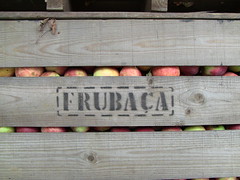 Things are extra busy inside Frubaça, it feels like the high season for apples as they roll passed me on the conveyer belt. At one stage they go under a large machine that shines a light on them, “Infrared Scanning,” Jorge Periquito, president of Frubaça, explains as we walk passed extremely long assembly lines. I can barely hear him over the sound of so many devices and machines as he explains the details of this state-of-the-art infrared scanner that detects any damage or defects to the apples. We go on to see several other fruits being sorted and packaged for sending out to supermarkets and other places throughout the country. Some of the labels are even printed in Spanish and I learn later that beyond Spain the company sends their products to France as well. Hard to believe this modest facility is serving up fruit even beyond the borders of Portugal, but the more I learned about Frubaça, the more I understood, this is no ordinary operation.
Things are extra busy inside Frubaça, it feels like the high season for apples as they roll passed me on the conveyer belt. At one stage they go under a large machine that shines a light on them, “Infrared Scanning,” Jorge Periquito, president of Frubaça, explains as we walk passed extremely long assembly lines. I can barely hear him over the sound of so many devices and machines as he explains the details of this state-of-the-art infrared scanner that detects any damage or defects to the apples. We go on to see several other fruits being sorted and packaged for sending out to supermarkets and other places throughout the country. Some of the labels are even printed in Spanish and I learn later that beyond Spain the company sends their products to France as well. Hard to believe this modest facility is serving up fruit even beyond the borders of Portugal, but the more I learned about Frubaça, the more I understood, this is no ordinary operation.
First there’s the technology: GPS, RFID, Infrared, High Pressure Processing (HPP) Machines, are just some of the tools that play a critical role in how this natural fruit company functions. In the case of the HPP machine, we’re talking about a device with few equals anywhere in the world, a piece of technology based on an old idea (pressure), that isn’t even known by most other companies out there. It simulates the pressure equal to 60 kilometers under the sea, a pressure at which microrganisms are destroyed but the integrity of the juice remains in tact.
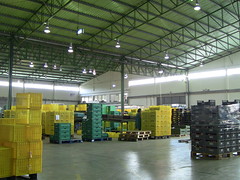 Jorge and I walk up the stairs to the giant metal tube where small bottles of mango juice are being loaded in. This new room we’re in has a fantastic scent of fruit that hits you like the freshest mountain breeze imaginable. As the process begins as we watch the digital display of the pressure meter rise. Nearby another version of the same machine is being loaded up with little packs of apple sauce. Again, all around us, conveyer belts carry bottles of juice to their next destination. Near the juicing machines I’m asked not to take any pictures as the machine manufacturers are very protective of their technology, I leave the camera off and focus my eyes on the apple foam flowing into a nearby drain. I’m temped to cup my two hands together and drink some delicious looking foam.
Jorge and I walk up the stairs to the giant metal tube where small bottles of mango juice are being loaded in. This new room we’re in has a fantastic scent of fruit that hits you like the freshest mountain breeze imaginable. As the process begins as we watch the digital display of the pressure meter rise. Nearby another version of the same machine is being loaded up with little packs of apple sauce. Again, all around us, conveyer belts carry bottles of juice to their next destination. Near the juicing machines I’m asked not to take any pictures as the machine manufacturers are very protective of their technology, I leave the camera off and focus my eyes on the apple foam flowing into a nearby drain. I’m temped to cup my two hands together and drink some delicious looking foam.
During my two hours at the plant Jorge explains the company, cooperative actually, from the beginning. He is one of 5 people that, since 1992, oversee the cooperative, all of which are from this rural community. They invested heavily in technology and go regularly to trade fairs and conferences all over the world, in an effort to know all the latest methods for handling the growing of fruit and production process. They’re not trying to be organic, their intention is to only use pesticides when it is absolutely necessary, a system of evaluation known as “integrated pest management.”
At some point I asked Jorge about business, his approach to the global demand that says – a company must grow and make more profit year after year. His response was that the company is not interested in growth for the sake of growth. They won’t try to fight price wars to sell the cheapest fruit, choosing instead to offer the best quality, in hopes that customers recognize the value. They won’t move or expand, this is their community and their intention is to keep it healthy and working. Then, a conversation topic I never expected to arise – arose: “The socioeconomic model of the urban setting is finished.” Technology from the city applied back in the countryside can help create a healthy and sustainable life in a way that is increasingly hard to achieve in the urban setting.
For a moment I though Jorge must have been listening to my latest podcasts or reading my tweets. But then I realized the connection- sustainable business. Quality food with real ingredients produced by a proud community that has been there for generations. Using the latest in technology and applying it to old fashion ideas. It all connects back to the theme of doing things differently then the conventional way. Taking steps to build lives that are about something other than making money and consuming as much as possible. Once again I had stumbled upon the kind of ideas and practices that have the power to change our world.
Our Gadgets, Our Planet
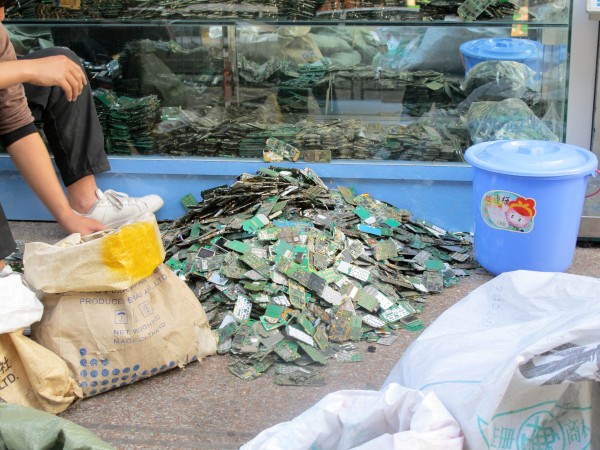
This week I will meet up with David Kousemaker of TechTravels to interview him about his work on the issue of where our old gadgets end up. More specifically we will delve into a topic that the mainstream world only occasionally alludes to when they mention how “somewhere in China” our old computers and phones are painstakingly recycled in the most horrendous of conditions. Amazingly such an alarming statement is taken as almost cliché when you look at how rarely media outlets get deeper into this issue.
But over the past few years, David Kousemaker has done just that. In fact, he has gone beyond what most any other newspaper or reporter has ever uncovered in places like China, Indonesia, and Brazil, delving into not only what gets recycled but who does the recycling, how they live, where different phases of the process take place and so on. His findings have been documented in text and photos on his website, Techtravels.
The idea behind meeting David, besides learning first hand details about these people, places, and activities, is to also get a better picture of the global game of electronics disposal. With all the devices we have gone through and will go through as we upgrade, replace, and go for the next thing, what happens to all these gadgets? What impact are we who buy these devices and later get rid of them, having on society and the planet? This week, we get more answers to these and other questions…
Big Pharma Ads on Their Way
 Anyone who has ever been to the United States, or watched commercials on American Television somehow, knows of the never-ending barrage of Pharmaceutical ads that have come to take over the gaps in between programming. They feature excessively clean and happy people walking through parks or high-fiving each other because some ailment they have has been cured by some brand name you should “ask your doctor about”. I can only imagine what its like to be a doctor in the United States today and have your patients coming up to you “asking about” a drug they saw on TV which they would like to have.
Anyone who has ever been to the United States, or watched commercials on American Television somehow, knows of the never-ending barrage of Pharmaceutical ads that have come to take over the gaps in between programming. They feature excessively clean and happy people walking through parks or high-fiving each other because some ailment they have has been cured by some brand name you should “ask your doctor about”. I can only imagine what its like to be a doctor in the United States today and have your patients coming up to you “asking about” a drug they saw on TV which they would like to have.
This has become the state of the American mediasphere, while over in the EU we still have in place relatively strong regulations preventing that kind of advertisement. Until now.
Ok perhaps the “until now” part makes things seem a little to dire, I would have done better to say that at this moment in time, the EU may relax its rules on Pharmaceutical and medical advertising. Relaxing doesn’t mean we’ve got old people holding hands and discussing pills to lower their cholesterol on TV. But what we do have is a potential break from the clear policy of no medical advertising in the media.
The information is not easy to come by, perhaps due to its complexity or vagueness, so it is not exactly being discussed by the major news outlets. What I’ve been able to gather at this point breaks down this way:
- The change in policy would “allow pharmaceutical companies to provide information directly to consumers”
- This was proposed in 2008, but put away soon thereafter due to strong criticism from member states.
- The information they provide would have to be factual, objective, and not seek to advertise prescription drugs.
- Any such information will go through a committee or a panel that will decide if it meets standards.
Of course many questions remain which I will now pose to various stakeholders and associations, regarding such a change. Is this taking the EU down the same path as the United States, towards bombarding citizens with clever and appealing visuals regarding what they should choose for when it comes to health and medicine? Is there a push now within EU institutions to pursue this as early as this year? While I’m at it, just how powerful and influencial is the pharmaceutical lobby in Brussels?
Hopefully very soon Ill have some answers which you’ll be able to find right here in a future post.
Cuban Medical Talk
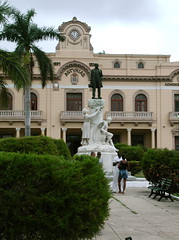 My friend Chris Lydon posted an excellent Radio Open Source recently, as he is making his way around Cuba. As opposed to the highly revered personalities and voices he usually offers us, this time Chris runs into three American medical students who have been studying medicine in Cuba for the last 4 years.
My friend Chris Lydon posted an excellent Radio Open Source recently, as he is making his way around Cuba. As opposed to the highly revered personalities and voices he usually offers us, this time Chris runs into three American medical students who have been studying medicine in Cuba for the last 4 years.
The three ladies have great stories of how they came to study in Cuba and even better tales of how things work or don’t work in their day to day lives. They not only talk about what is unique and effective about Cuban style medicine, they also talk about how they will bring it home to the United States, to communities in need.
There’s much more in this interview then these few lines can properly capture. Do what you do best: listen for yourself.
